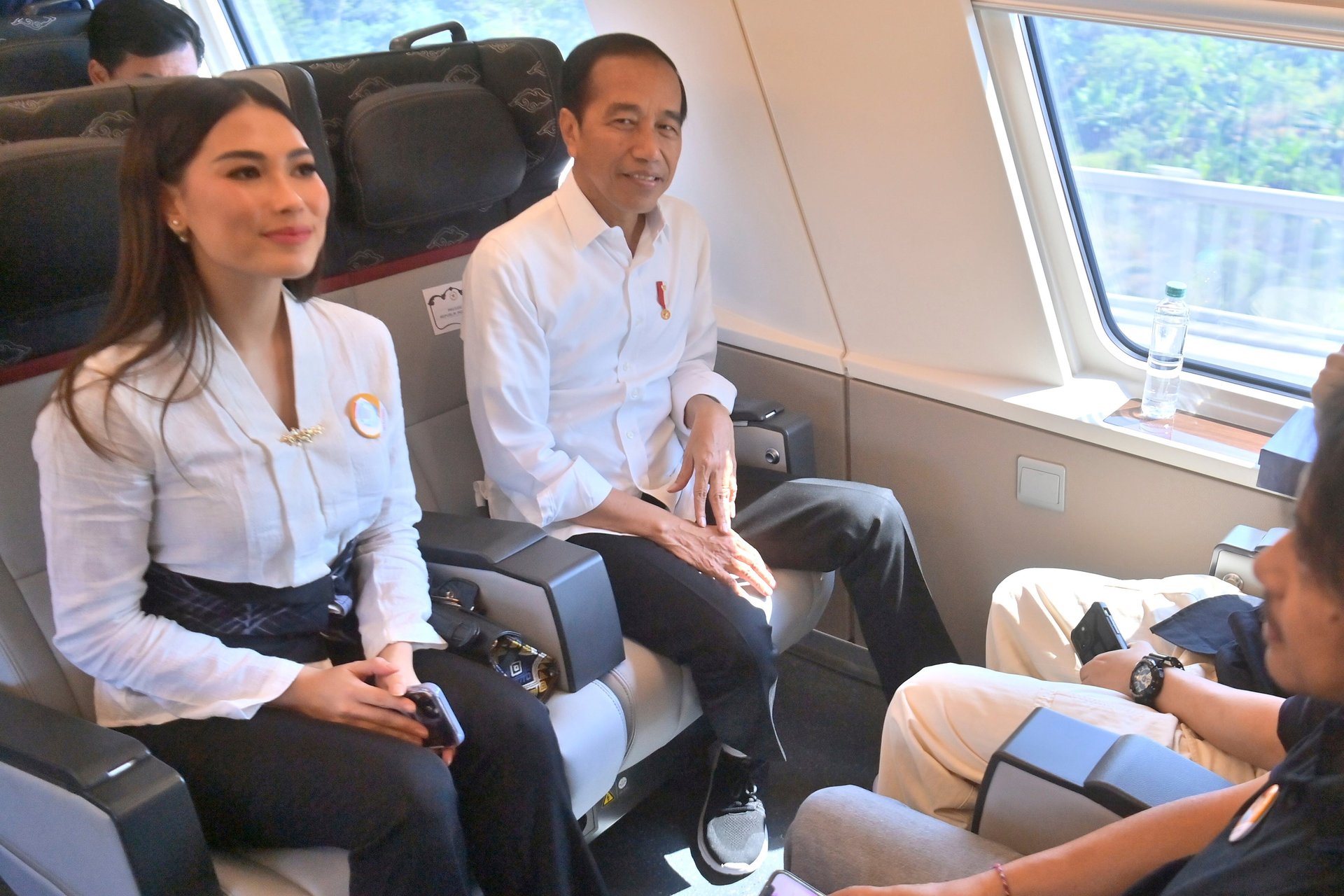Indonesian leader takes a test ride on Southeast Asia's first high-speed railway
Indonesian President Joko Widodo has taken a test ride on Southeast Asia’s first high-speed railway, a key project under China’s Belt and Road infrastructure initiative

JAKARTA, Indonesia (AP) — Indonesian President Joko Widodo took a test ride Wednesday on Southeast Asia’s first high-speed railway, a key project under China’s Belt and Road infrastructure initiative.
Suggested Reading
The $7.3 billion rail project, funded largely by China, connects the capital, Jakarta, and Bandung, the heavily populated capital of West Java province. It is to begin commercial operations on Oct. 1 and will cut travel time between the two cities from the current three hours to about 40 minutes.
Related Content
The 142.3-kilometer (88.4-mile) railway was constructed by PT Kereta Cepat Indonesia-China, known as PT KCIC, a joint venture between an Indonesian consortium of four state-owned companies and China Railway International Co. Ltd. The joint venture said the trains will be the fastest in Southeast Asia, with speeds of up to 350 kph (217 mph).
Widodo toured the railway’s first station, Halim KCBJ in eastern Jakarta, and then rode the made-in-China bullet train to Bandung’s Padalarang station, one of the railway’s four stations, in about 25 minutes, before taking a feeder train to downtown Bandung.
He told reporters after getting off the train that he felt comfortable “while sitting or walking” inside the bullet train at its top speeds.
“This is civilization speed!” Widodo said. “But most importantly, we want to encourage people to switch from cars to mass transportation to reduce congestion and pollution.”
Widodo said that congestion is estimated to cost the economy $6.5 billion a year, and he urged people to use trains, subways and buses rather than private cars.
Chinese Premier Li Qiang took a test ride on the high-speed rail last week while visiting Jakarta for three days of talks with leaders of the Association of Southeast Asia Nations and other countries.
Li rode the train from Jakarta’s Halim station to the next station in West Java’s Karawang city, a 40-kilometer (25-mile) distance that took about 11 minutes. He then returned on the same train to Halim for the East Asia Summit in Jakarta.
Construction of the rail line began in 2015. It was originally expected to begin operations in 2019, but was delayed by disputes over land acquisition, environmental issues and the COVID-19 pandemic. It was planned to cost 66.7 trillion rupiah ($4.3 billion) but the amount ballooned to 113 trillion rupiah ($7.3 billion).
The trains were modified for Indonesia’s tropical climate and are equipped with a safety system that can respond to earthquakes, floods and other emergency conditions.
The rail deal was signed in October 2015 after Indonesia selected China over Japan in competitive bidding. It was financed with a loan from the China Development Bank for 75% of the cost. The remaining 25% came from the consortium’s own funds.
The project is part of a planned 750-kilometer (466-mile) high-speed train line that would cut across four provinces on the main island of Java and end in the country’s second-largest city, Surabaya.